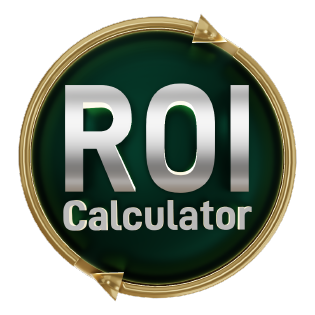In the world of sales, the traditional funnel model has long been the go-to strategy for businesses looking to convert prospects into loyal customers. However, as the landscape of sales and marketing continues to evolve, a new player can help in modernizing your sales approach- the flywheel sales model.
The sales funnel, a long-standing staple of sales strategy, has been instrumental in guiding businesses towards converting leads into customers. However, as markets become more competitive and customer expectations rise, the limitations of the funnel model have become increasingly apparent. This has led many organizations to embrace the flywheel model as a more effective and adaptable approach to sales.
In this blog, we'll delve into the key differences between the funnel and flywheel sales models, explore the benefits of transitioning to the flywheel approach, and discuss strategies for making this transition.
Funnel vs. Flywheel Sales Model: A Comparative Overview
Here’s a comparative overview:
The Funnel Sales Model:
The traditional sales funnel is a linear model that represents the buyer's journey from awareness to consideration and, finally, to the decision stage. At each stage, potential customers are filtered, and a portion of them is retained until they ultimately make a purchase. This approach focuses on the idea that more leads at the top of the funnel will eventually result in more sales at the bottom.
The Flywheel Sales Model:
In contrast, the flywheel sales model envisions the customer relationship as a continuous loop rather than a linear progression. It emphasizes the idea that customer satisfaction and engagement are critical to sustaining and accelerating business growth. The flywheel model comprises three main stages: attract, engage, and delight. Instead of viewing customers as the endpoint of the process, they become an integral part of the system, providing momentum for growth.
Now that we understand the fundamental differences between the funnel and flywheel sales models before transitioning to the flywheel model, let's explore in detail:
- Customer-Centricity:
Funnel Model: Historically, the funnel model prioritizes lead generation and customer acquisition, often viewing customers as the endpoint of the sales process.
Flywheel Model: The flywheel model shifts the focus to customer-centricity. It recognizes that customers are not merely endpoints but active contributors to a business's growth. This approach aims to attract, engage, and delight customers to foster loyalty and advocacy. - Linear vs. Circular:
Funnel Model: The funnel is linear, representing a one-way journey from the top (awareness) to the bottom (conversion). It implies that once a customer converts, they exit the funnel.
Flywheel Model: The flywheel is circular, reflecting the continuous nature of customer interactions. After conversion, customers remain within the system, actively contributing to its momentum. - Resource Allocation:
Funnel Model: Resources in the funnel model are heavily weighted towards the top of the funnel, with a strong emphasis on lead generation and acquisition. This can lead to high acquisition costs.
Flywheel Model: The flywheel allocates resources more evenly across the entire customer journey. It recognizes that investing in customer satisfaction and retention can lead to lower customer acquisition costs and sustainable growth. - Growth Dynamics:
Funnel Model: The funnel model often results in a 'leaky bucket' scenario, where businesses lose a significant portion of acquired customers after conversion. This necessitates a constant influx of new leads to maintain growth.
Flywheel Model: By prioritizing customer satisfaction and retention, the flywheel model aims to reduce customer churn and build a loyal customer base. Satisfied customers not only make repeat purchases but also refer others, driving organic growth.
Changing Sales Strategies: Funnel to Flywheel
Embracing the flywheel in sales may seem daunting, but it's a worthwhile endeavor. Here are some steps to help you make the shift:
1. Assess Your Current State:
Start by evaluating your existing sales processes and strategies. Identify the strengths and weaknesses of your funnel model to pinpoint areas that need improvement.
2. Invest in Customer Insights:
To successfully implement the flywheel model, you must understand your customers deeply. Gather insights into their needs, preferences, pain points, and expectations.
3. Align Your Team:
Ensure that your sales and marketing teams are aligned with the new approach. Everyone should be on the same page when it comes to the customer-centric focus of the flywheel model.
4. Adopt Technology:
Embrace modern CRM (Customer Relationship Management) tools and marketing automation platforms to help you manage and nurture customer relationships effectively.
5. Educate and Train:
Provide training to your sales and marketing teams on the flywheel methodology and its principles. Equip them with the skills needed to execute this strategy effectively.

Improving Sales with the Flywheel Model
Now, let's delve deeper into flywheel methodology advantages and how the flywheel model can enhance your sales efforts:
1. Content Marketing and Education:
Create valuable content that educates and engages your target audience. This content can serve as a magnet to attract potential customers and provide ongoing value to existing ones.
2. Personalization:
Use customer data and insights to personalize your interactions and offerings. Personalization not only improves the customer experience but also increases the likelihood of repeat purchases.
3. Customer Retention:
Implement strategies to delight and retain existing customers. This can include loyalty programs, exceptional customer service, and post-purchase engagement.
4. Advocacy and Referrals:
Encourage satisfied customers to become advocates for your brand. Implement referral programs that reward customers for referring others to your business.
5. Data Analysis and Optimization:
Continuously analyze data to understand what's working and what's not. Use this information to refine your sales and marketing strategies for better results.
Shifting from Traditional Funnel to Flywheel: Important Steps
Making the shift from the traditional funnel to the flywheel model is not just about changing processes; it's a cultural transformation within your organization. Here are some key steps to facilitate this shift:
1. Leadership Buy-In:
Secure buy-in from your leadership team. They should champion the flywheel model and demonstrate its importance to the entire organization.
2. Communication and Training:
Communicate the shift to all employees and provide comprehensive training to ensure everyone understands the new approach and their role in it.
3. Set Clear Objectives:
Define clear, measurable objectives for your transition to the flywheel model. This could include metrics related to customer satisfaction, retention rates, and referral program performance.
4. Monitor Progress:
Continuously monitor your progress and make adjustments as needed. Regularly review data and gather feedback from both customers and employees.
5. Celebrate Success:
Celebrate milestones and successes along the way. Recognize and reward employees who contribute to the successful adoption of the flywheel model.
Embracing the Flywheel: Real-World Examples of Successful Flywheel Adoption
HubSpot: HubSpot, a leading inbound marketing and sales platform, is a prime example of successful flywheel adoption. By transitioning from a funnel-focused approach to the flywheel, HubSpot has not only improved customer retention but also expanded its customer base through referrals and word-of-mouth. The company's revenue growth has been remarkable since embracing the flywheel model.
Amazon: Amazon, the e-commerce giant, thrives on the principles of the flywheel model. By prioritizing customer satisfaction, Amazon has built a loyal customer base and capitalized on word-of-mouth marketing. According to a study by Kantar Retail, Amazon's Prime members spend significantly more than non-Prime members, showcasing the power of customer-centricity in driving revenue.
Salesforce: Salesforce, a leader in cloud-based CRM software, has also embraced the flywheel model. By focusing on customer engagement and satisfaction, Salesforce has not only retained a loyal customer base but has also grown through customer referrals and advocacy. Salesforce's success underscores the flywheel model's effectiveness in the B2B sector.
Rethinking the Sales Funnel: Making The Shift
In an era where customers hold more power than ever before, the traditional funnel sales model falls short of meeting their evolving expectations. Transitioning to the flywheel sales model offers numerous advantages, including a customer-centric focus, sustained growth, cost-effectiveness, and adaptability.
Making the shift from the funnel to the flywheel may require a cultural transformation within your organization, but the long-term benefits are well worth the effort. By embracing the flywheel, you can modernize your sales approach, build stronger customer relationships, and position your business for success in the digital age. It's time to rethink the sales funnel and embrace the benefits of the flywheel sales approach to drive your business forward.


